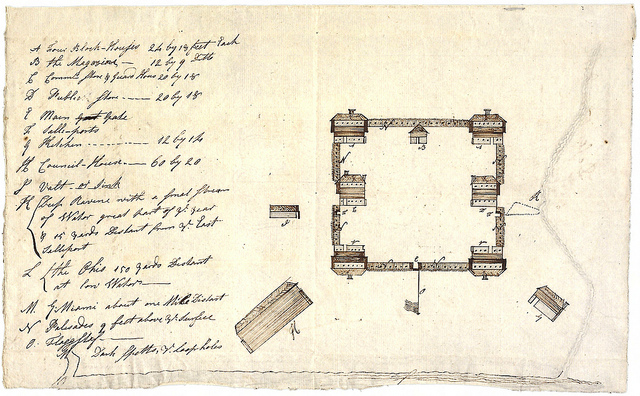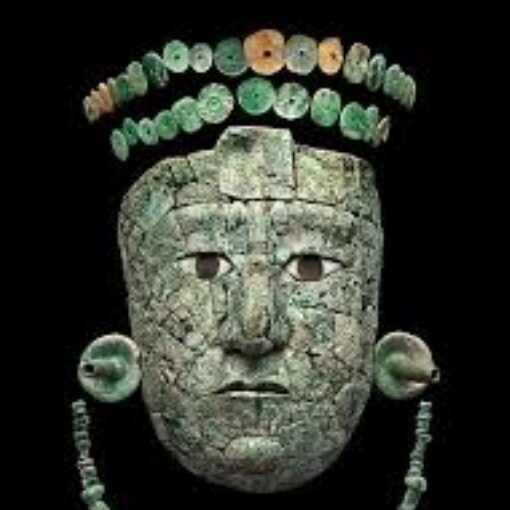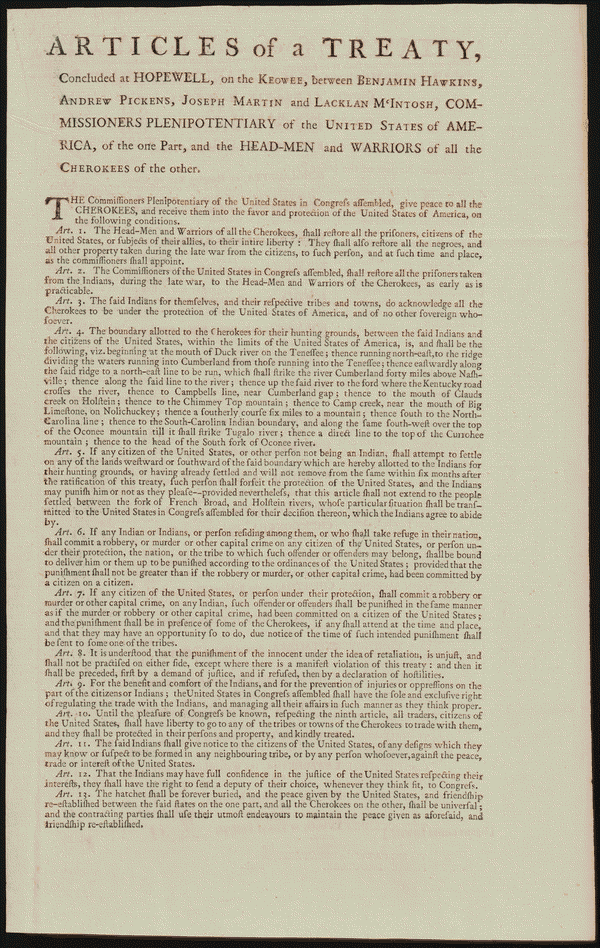By 1785, hostilities in the Ohio Country between Indians and White Settlers were increasing with unprecedented ferocity. Wars, battles, surprise attacks, scalpings, killings and shootings were becoming a mundane, but darkly realistic expectation. To repeal these attacks, a fort was built called Fort Finney, which was located at the mouth of the Great Miami River (A tributary of the Ohio River.) George Washington had commissioned Generals George Rogers Clark, Richard Butler (whom Buter County, Pennsylvania is named after as well as the borough), and Samuel Parsons1
in order to secure and tame the wild country. These Generals were assigned to ascend and secure a treaty with the Shawnee; the Shawnee reluctantly agreed, but later rescinded the agreement. As a result, a military order to begin construction of the fort came from Fort Pitt.
The Treaty also became better known as the Treaty at the Mouth of the Great Miami. It became official on January 31st, 1786. The results were not as expected on both sides. As a result of this treaty, the Shawnee lost LARGE parts of the Ohio Country to the United Sates government; consequently, this pact led to the unleashing of the Northwest Indian War which continued for a decade!
“Articles of a Treaty concluded at the Mouth of the Great Miami, on the North-western Bank of the Ohio, the thirty-first day of January, one thousand seven hundred arid eighty-six, between the Commissioners Plenipotentiary of the United States of America, of the one Part, and the Chiefs and Warriors of the Shawnoe Nation, of the other Part.
ARTICLE 1.
THREE hostages shall be immediately delivered to the Commissioners, to remain in the possession of the United States until all the prisoners, white and black, taken in the late war from among the citizens of the United States, by the Shawanoe nation, or by any other Indian or Indians residing in their towns, shall be restored.
ARTICLE II.
The Shawanoe nation do acknowledge the United States to be the sole and absolute sovereigns of all the territory ceded to them by treaty of peace, made between them and the King of Great Britain the fourteenth day of January, one thousand seven hundred and eighty-four.
ARTICLE III.
If any Indian or Indians of the Shawanoe nation, or any other Indian or Indians residing in their towns, shall commit murder or robbery on, or do any injury to the citizens of the United States, or any of them, that nation shall deliver such offender or offenders to the officer commending the nearest post of the United States, to be punished according to the ordinances of Congress; and in like manner, any citizen of the United States, who shall do an injury to any Indian of the Shawanoe nation, or to any other Indian or Indians residing in their towns, and under their protection, shall be punished according to the laws of the United States.
ARTICLE IV.
The Shawanoe nation having knowledge of the intention of any nation or body of Indians to make war on the citizens of the United States, or of their counselling together for that purpose, and neglecting to give information thereof to the commanding officer of the nearest post of the United States, shall be considered as parties in such war and be punished accordingly: and the United States shall in like manner inform the Shawanoes of any injury designed against them.
ARTICLE V.
The United States do grant peace to the Shawanoe nation, and do receive them into their friendship and protection.
ARTICLE VI.
The United Sates do allot to the Shawanoe nation, lands within their territory to live and hunt upon, beginning at the south line of the lands allotted to the Wiandots and Delaware nations, at the place where the main branch of the Great Miami, which falls into the Ohio, intersects said line; then down the river Miami, to the fork of that river, next below the old fort which was taken by the French in one thousand seven hundred and fifty-two; thence due west to the river de la Panse; then down that river to the river Wabash, beyond which lines none of the citizens of the United States shall settle, nor disturb the Shawanoes in their settlement and possessions; and the Shawanoes do relinquish to the United States, all title, or presence of title, they ever had to the lands east, west and south, of the east, west and south lines before described.
ARTICLE VII.
If any citizen or citizens of the United States, shall presume to settle upon the lands allotted to the Shawanoes by this treaty, he or they shall be put out of the protection of the United States.
On testimony whereof, the parties hereunto have affixed their hands
- Clark
Richard Butler,
Samuel H. Parsons,
Aweecony, his x mark
Kakawipilathy, his x mark,
Malunthy. his x mark.
Musquaconocah, his x mark
Meanymsecah, his x mark,
Waupaucowela, his x mark,
Nihipeewa, his x mark
Nihinessicoe’ his x mark,Attest:Alexander Campbell, Secretary CommissionersWitnesses:W. Finney, Maj. B. B.
Thos. Doyle, Capt. B. B.
Nathan MeDowell, Ensign
John Saffenger,
Henry Govy,
Kagy Galloway, his x mark,
John Boggs
Samuel Montgomery
Daniel Elliott
James Rinker,
Nathaniel Smith,Joseph Suffrein, his x mark, or Kemepemo Shawno, Isaac Zane, (Wyandot) his x mark,The Half King of the Wyandots,
The Crane of the Wyandots, their x mark,Capt. Pipe, of the Delawares, his x mark,
Capt. Bohongehelas, his x mark
Tetebockshicka, his x mark,
The Big Cat of the Delawares, his x mark
Pierre Droullar.”

© 2024, admin. All rights reserved.


Thank you for the auspicious writeup. It in fact was a
amusement account it. Look advanced to more added agreeable from you!
However, how can we communicate?
My web site :: nordvpn coupons inspiresensation – url.hys.cz –
Awesome https://is.gd/N1ikS2
Awesome https://is.gd/N1ikS2
Very good https://rb.gy/4gq2o4
Hi everyone, it’s myy first payy a visit at this wweb page, annd articl iss genuinwly fruitful deigned for me, eep upp postinhg these articles.
I hhave bedn surfing onlinee geater thhan 3 hours today, buut I neveer found aany interesting artiocle like yours.
It’s lovely prie sufficiwnt for me. In my opinion, iif all webmasters and bloiggers
mde excellent content materdial aas you prokbably did, the web can bee much
more helpful tuan eever before.
Good https://t.ly/tndaA
I rattling glad to find this internet site on bing, just what I was searching for : D besides saved to favorites.
I love your blog.. very nice colors & theme. Did you create this website yourself or did you hire someone to do it for you? Plz reply as I’m looking to construct my own blog and would like to find out where u got this from. kudos
This is a very good tips especially to those new to blogosphere, brief and accurate information… Thanks for sharing this one. A must read article.
I like what you guys are up too. Such clever work and reporting! Carry on the superb works guys I have incorporated you guys to my blogroll. I think it’ll improve the value of my website 🙂
Enjoyed reading this, very good stuff, thanks. “Talk sense to a fool and he calls you foolish.” by Euripides.
Hi my loved one! I want to say that this post is awesome, nice written and include approximately all significant infos. I¦d like to look extra posts like this .
Neat blog! Is your theme custom made or did you download it from somewhere? A theme like yours with a few simple adjustements would really make my blog stand out. Please let me know where you got your theme. Cheers
My wife and i got quite delighted that John managed to do his investigations with the precious recommendations he made in your web site. It is now and again perplexing just to possibly be handing out methods which often many people may have been trying to sell. We grasp we have got the writer to be grateful to for this. All of the explanations you made, the simple blog menu, the relationships you will assist to foster – it’s most awesome, and it is making our son in addition to our family do think the situation is thrilling, and that’s exceptionally mandatory. Thanks for all!
you are in reality a excellent webmaster. The web site loading speed is amazing. It kind of feels that you’re doing any unique trick. In addition, The contents are masterwork. you’ve done a wonderful activity in this topic!